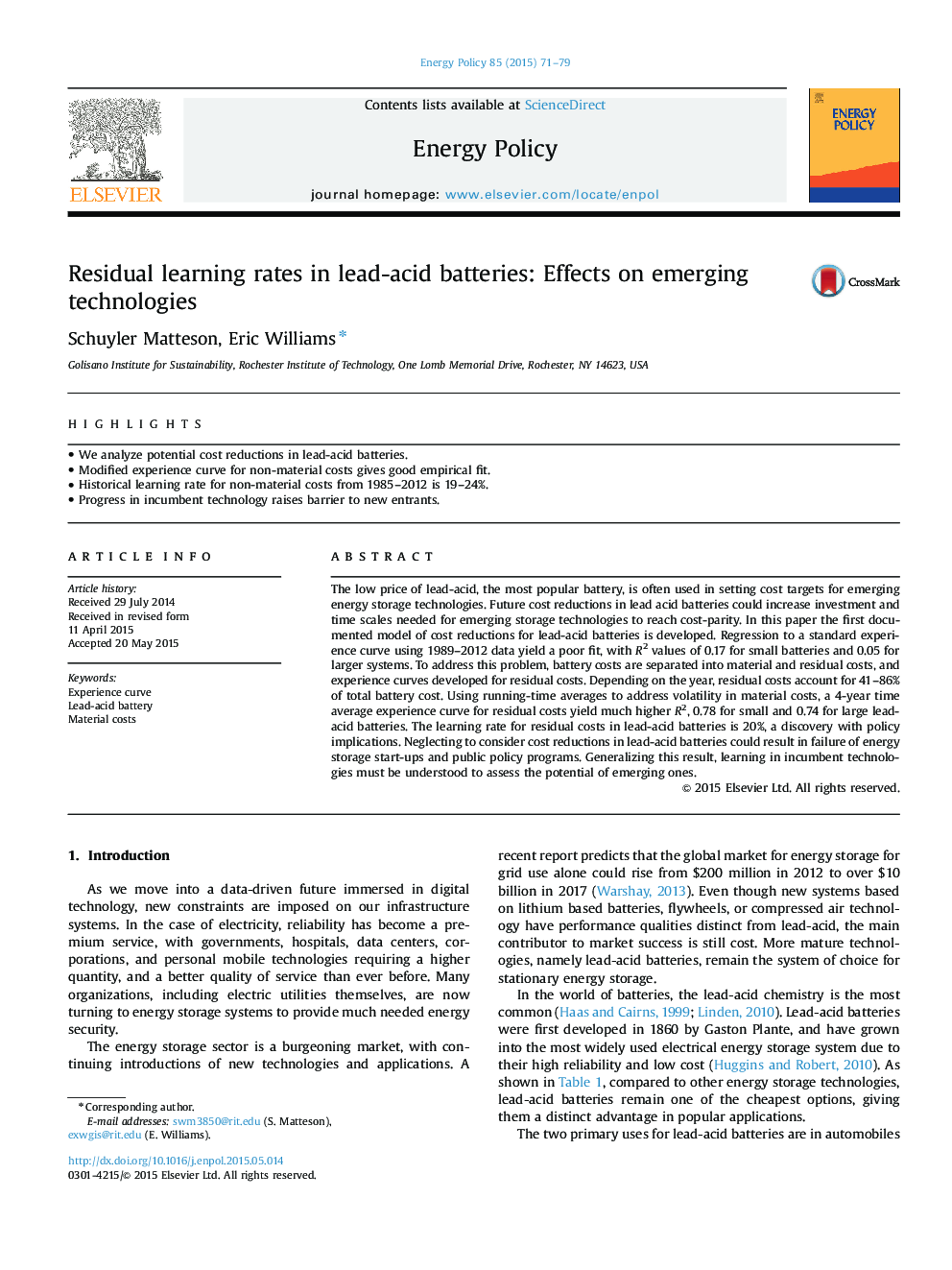| Article ID | Journal | Published Year | Pages | File Type |
|---|---|---|---|---|
| 7400865 | Energy Policy | 2015 | 9 Pages |
Abstract
The low price of lead-acid, the most popular battery, is often used in setting cost targets for emerging energy storage technologies. Future cost reductions in lead acid batteries could increase investment and time scales needed for emerging storage technologies to reach cost-parity. In this paper the first documented model of cost reductions for lead-acid batteries is developed. Regression to a standard experience curve using 1989-2012 data yield a poor fit, with R2 values of 0.17 for small batteries and 0.05 for larger systems. To address this problem, battery costs are separated into material and residual costs, and experience curves developed for residual costs. Depending on the year, residual costs account for 41-86% of total battery cost. Using running-time averages to address volatility in material costs, a 4-year time average experience curve for residual costs yield much higher R2, 0.78 for small and 0.74 for large lead-acid batteries. The learning rate for residual costs in lead-acid batteries is 20%, a discovery with policy implications. Neglecting to consider cost reductions in lead-acid batteries could result in failure of energy storage start-ups and public policy programs. Generalizing this result, learning in incumbent technologies must be understood to assess the potential of emerging ones.
Keywords
Related Topics
Physical Sciences and Engineering
Energy
Energy Engineering and Power Technology
Authors
Schuyler Matteson, Eric Williams,
